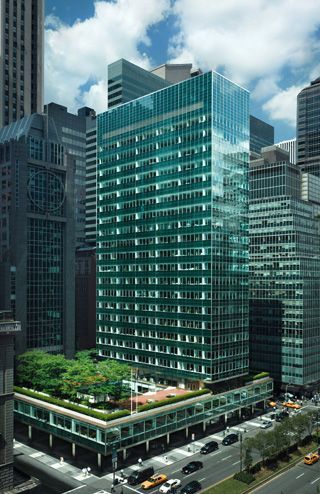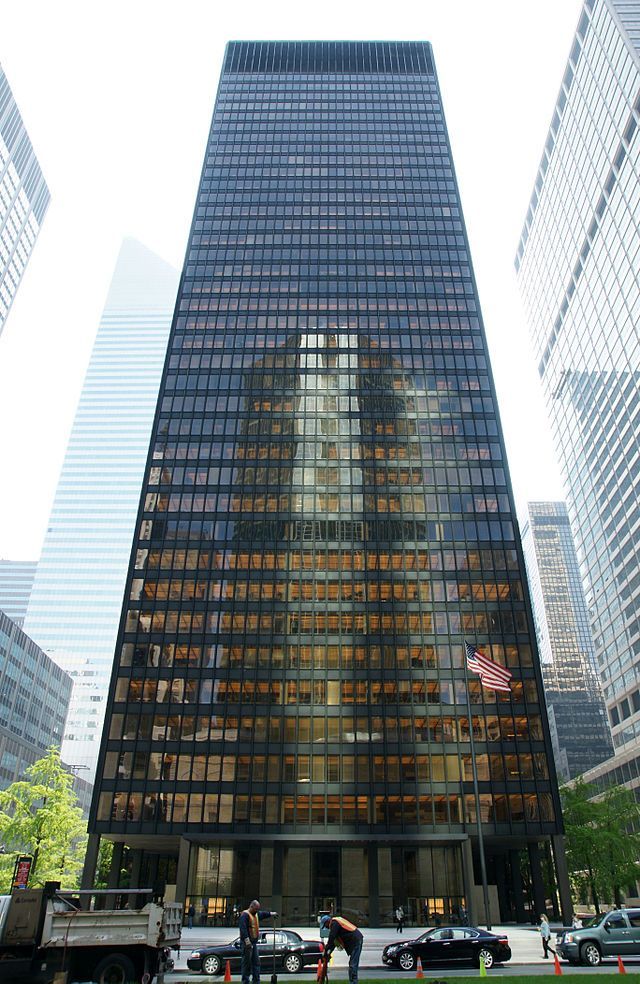
 I recently attended the seminar entitled “The Future of Glass in the Building Skin,” presented by Mic Patterson, Director of Strategic Planning for Enclos, at Glass Expo West in Irvine. A fascinating and highly-engaging speaker, Mic has written and talked for years on the subject and kept everyone’s attention for almost 90 minutes – not typically an easy feat at the end of a several-day Expo.
I recently attended the seminar entitled “The Future of Glass in the Building Skin,” presented by Mic Patterson, Director of Strategic Planning for Enclos, at Glass Expo West in Irvine. A fascinating and highly-engaging speaker, Mic has written and talked for years on the subject and kept everyone’s attention for almost 90 minutes – not typically an easy feat at the end of a several-day Expo.
Among a few of the things he mentioned that I found to be most interesting are that there are two buildings located in Midtown Manhattan, NY, considered to be glass building icons. They started an entirely new mentality on the subject of building and greatly influenced American architecture:
1) The Lever House, built in 1952 by SOM: Lever House, was one of the first glass-walled International Style office buildings in the country.
 2) The Seagram Building, built in 1957 by Mies van der Rohe, was the world’s most expensive skyscraper at the time, due to the use of expensive, high-quality materials and lavish interior decoration including bronze, travertine, and marble. It still stands as one of the finest examples of functionalist modernism, though it is interesting to note that it has the worst Energy Star rating of any building in New York, at 3 out of 100.*
2) The Seagram Building, built in 1957 by Mies van der Rohe, was the world’s most expensive skyscraper at the time, due to the use of expensive, high-quality materials and lavish interior decoration including bronze, travertine, and marble. It still stands as one of the finest examples of functionalist modernism, though it is interesting to note that it has the worst Energy Star rating of any building in New York, at 3 out of 100.*
Over the years, exterior glass facades were created with new, innovative glass panels which are dual- or triple-glazed, with lamination or low-e coating. But the global world is changing constantly, not only with technology (and mentioned examples of telephone technology leading to Skype; books leading to e-readers), but also in the glass industry. Architects, especially, are typically pushing glass suppliers to create new glass materials. There is always a push-and-pull mentality, because not all desired glass designs are feasible.
Mic talked about how the current design direction given by architects to glass suppliers are typically glass wall exteriors that can include:
-
Thin skins
-
Deep skins
-
Geometric form (beyond sculpture, bent glass, for example)
But that also advanced glass products are pushing engineers, architects, and the industry to invent new materials to meet evolving law requirements, such as:
-
Triple-quadruple glazing
-
X-chromic (smart glass)
-
Vacuum glazing (IGU units, but with the width of a single-glazed panel)
Features and extended materials that can be built into glass and which can greatly improve energy efficiency are:
-
Vision PV (photovoltaic) panels
-
VIP-panels (Vacuum Insulation Panels for effective insulation within very slim profiles)
-
Silicone seals (a big factor in providing excellent glass work and reaching high energy-efficiency)
-
Precise and well-sealed curtain wall assembly (big factor in achieving LEED requirements)
Mic talked about what most people consider to be largely unattainable net-zero-goals in the United States:
-
Until 2030 ⇒ all new commercial buildings
-
Until 2040 ⇒ 50% of all commercial buildings stock
-
Until 2050 ⇒ all commercial buildings (new + redevelopment)
 Mic Patterson was very skeptical that these goals will be ever achieved. To reach them, the use of more expensive materials would be required, and in the ever-constant push to meet strict budget requirements, it’s not likely to be done voluntarily.
Mic Patterson was very skeptical that these goals will be ever achieved. To reach them, the use of more expensive materials would be required, and in the ever-constant push to meet strict budget requirements, it’s not likely to be done voluntarily.
I’m aware that the reason it does happen in Europe to the extent of 100% on new construction, and 50-60% on redevelopment, is because laws have been in place since 1977 requiring these efficiencies. Currently the 4th version is in force, updated in 2002. In Europe, even consumers are given financial incentives with home building projects to ensure such goals are met.
The main goal for everyone in the glass industry should be to use glass properly – incorporating glass into building design should not be for just decorative purposes – it needs to also meet the goal of increasing energy efficiency.
This year’s Glass Expo West was a great event and I am looking forward to any and all future seminars led by Mic Patterson.
by Karin Scattolon, Giroux Glass, Inc., Project Manager for the High-End Design Team
*”Why Green Architecture Hardly Ever Deserves the Name,” ArchDaily
Above photo: Mic Patterson of Enclos gives a presentation during a session at Glass Expo West 2015, 3/20/15. Photo taken by USGlass Magazine.
Books by Mic Patterson (Amazon.com)